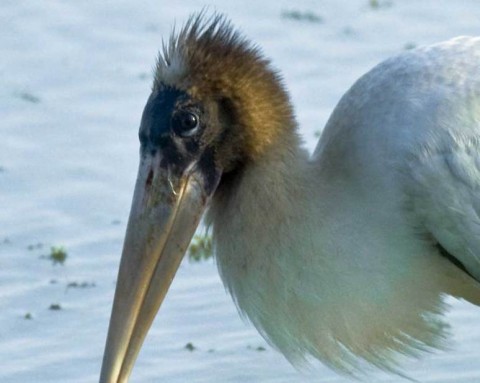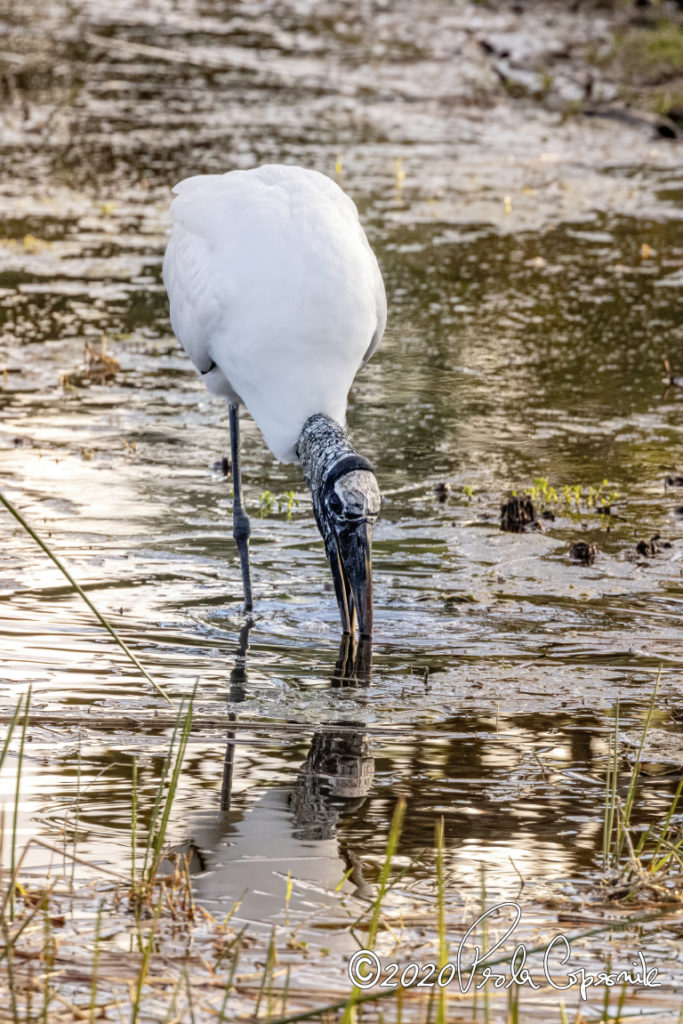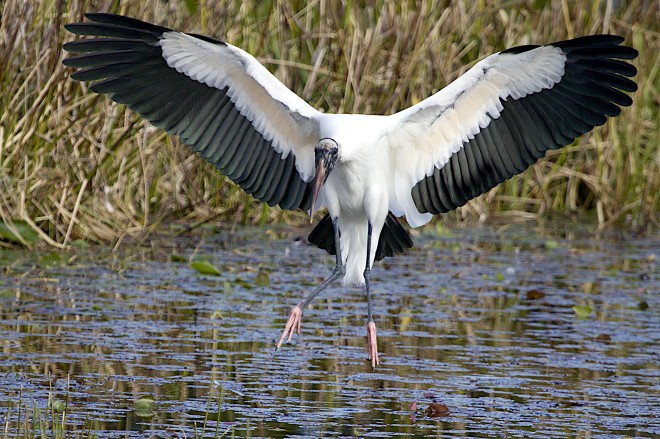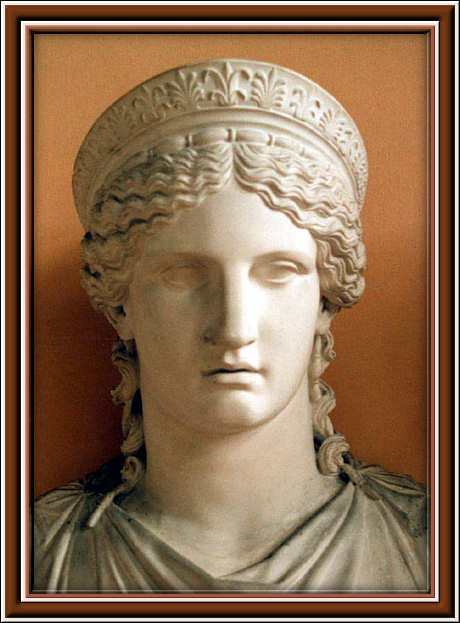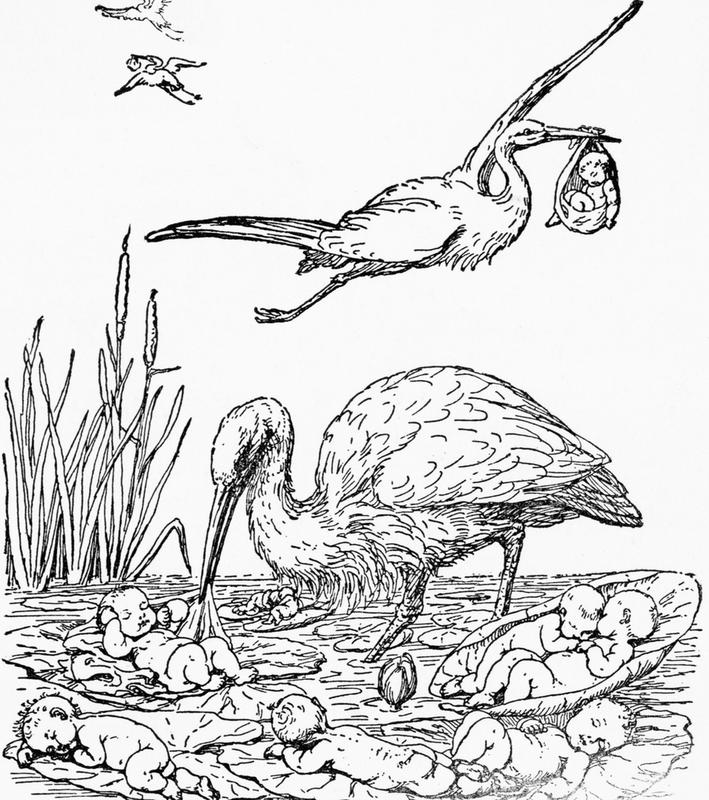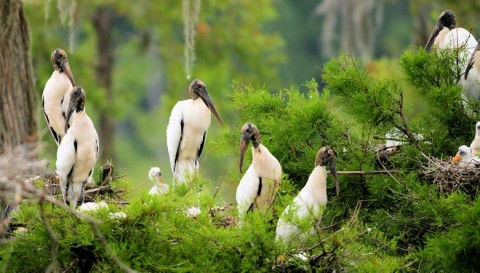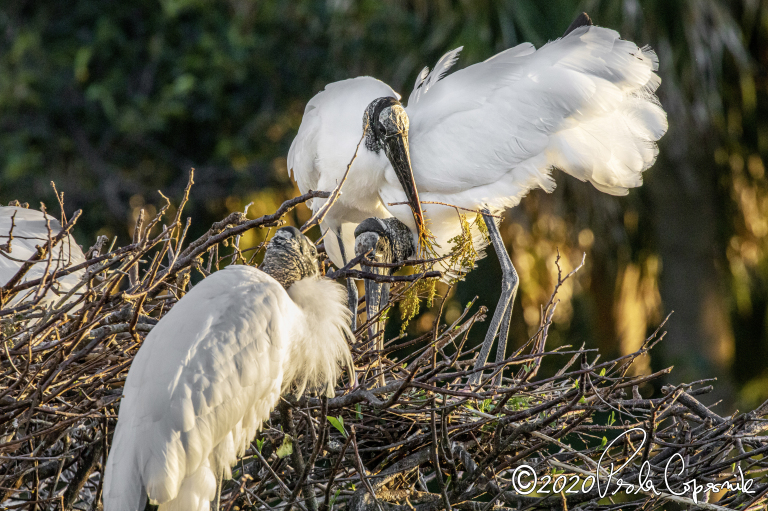by Doug Becker
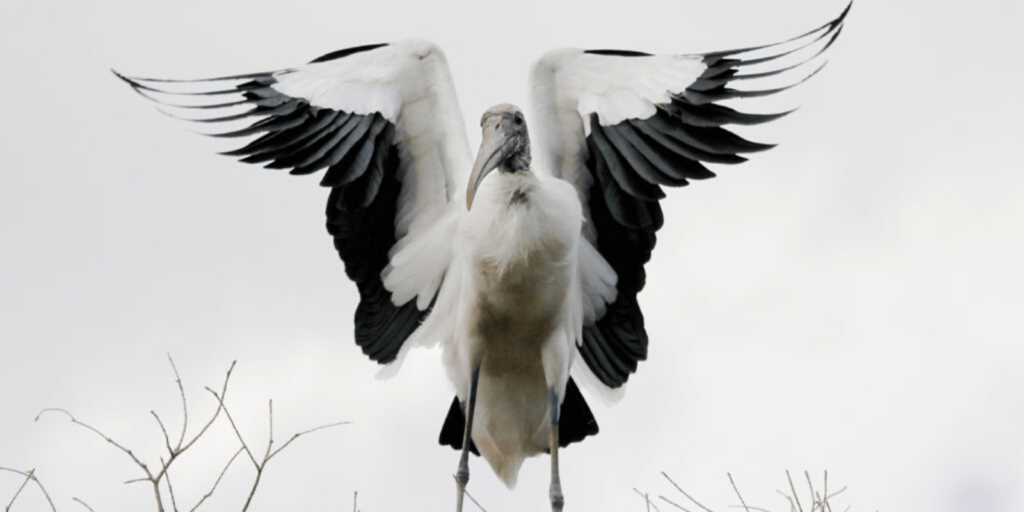
Storks! Here’s a special bird that we all know of, but may have never experienced. Though we know of no babies ever being delivered by a Stork, they are revered in Greek, Chinese, and European mythologies as good luck and harbingers of Spring and birth. In Greek legend, Hera, queen of the Olympian gods, became jealous of a beautiful mortal queen named Gerana, so Hera changed her into a Stork. In Gerana’s unhappiness, she retrieves her baby from the vengeful Hera. In depiction, the Greeks showed a beautiful Stork flying away with a baby in a blanket dangling from her beak.
This legend has been around forever, but it was Hans Christian Anderson who reestablished the legend in his 19th century version of the fable, called “The Storks.” In this popular story, the Storks would pluck dreaming babies from swamps and lakes and deliver them to deserving families. But, if a family has poorly behaved children, a Stork may well deliver only a dead baby. Hmm. On the other hand, in Europe, if the Storks built their giant nest on your rooftop, good luck would surely follow. And then, these wonderful Stork stories aided the Victorian culture by covering up the realities of sex to the young. Babies were just nicely delivered by a stork. Simple!
AMERICA’S NATIVE STORK
Ok, ok, that’s all many of us know about Storks. Most of it is lore, myths, and legends from other countries. But did you know that America has its own native Stork? Yes! The Wood Stork is a large, white bird with black wing-edging and wingtips. It is usually seen foraging in wetlands. The Wood Stork, as with other Storks, has a gray, featherless, scaly-looking head and neck. It has a long, heavy bill used to forage for fish, amphibians, and crustaceans in shallow water. These birds are social and can be seen with groups of Herons and Ibis when feeding. Their height of over 3-feet, and their large bald head and neck make them stand out in the crowd. The fact is, Wood Storks are quite ugly. Quite dramatic, but kinda ugly. Well, except in flight. Seeing these large wading birds in flight is a spectacle. With up to 69 inches of white wing, trimmed in black, they fly with head and legs outstretched, soaring on thermals, high into the sky, much like raptors or vultures. A group of soaring Wood Storks are a sight to see.
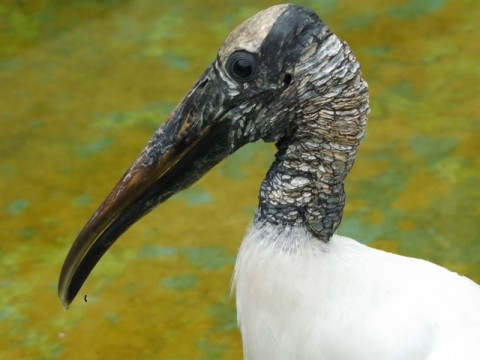
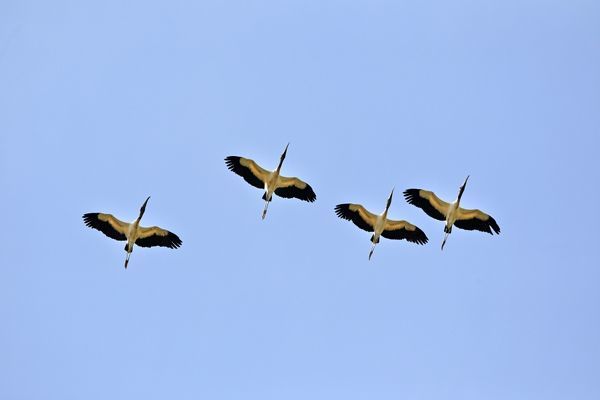
TERRITORY
The main reason Wood Storks are not common to many is because they are only found in Florida, SE Georgia, and SE South Carolina. Their range also covers Cuba and the islands, and both coasts of Mexico and Central America. As a Floridian, I see them regularly, anywhere from my backyard on the water, to marshy wetlands. Most often I see them in water-filled ditches along the road. Three or four Wood Storks all standing together in a ditch along the highway reminds me of some old hunched-over men just spending the day. Because Wood Storks have no larynx, they make no sound. Maybe that’s a good thing?

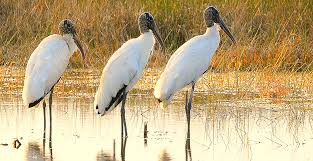
NESTING
Nesting is another example of their social behavior. Within their narrow breeding territories, Wood Storks nest in colonies, or rookeries, with Herons and Ibis. They build large, bulky nests over the water to be safe from predators. Almost any tree or shrub works well as long as the nest is near, or over, standing water. Both male and females gather sticks for the base of the nest which measures 3-5 feet across. The nest is then lined with greenery which is later covered with guano. This strengthens the nest and keeps it together. Building time is only 2-3 days, but improvements continue through the nesting period. Wood Storks clutch is once per year with 1-5 eggs. Nestling period is a long 50-55 days. Interestingly, in the hot summer while the chicks are still confined to the nest, the male and female will regurgitate water over the chicks to keep them cool. Quite nice!

A GROUP OF STORKS?
So, what is a group of Wood Storks called? Well, here are your choices: There is “a clatter of Storks”, or “a fifth of Storks”, “a muster of Storks”, ” a phalanx of Storks”, and “a swoop of Storks”. So, now that we have that straight, I’ll be giving a test next week!
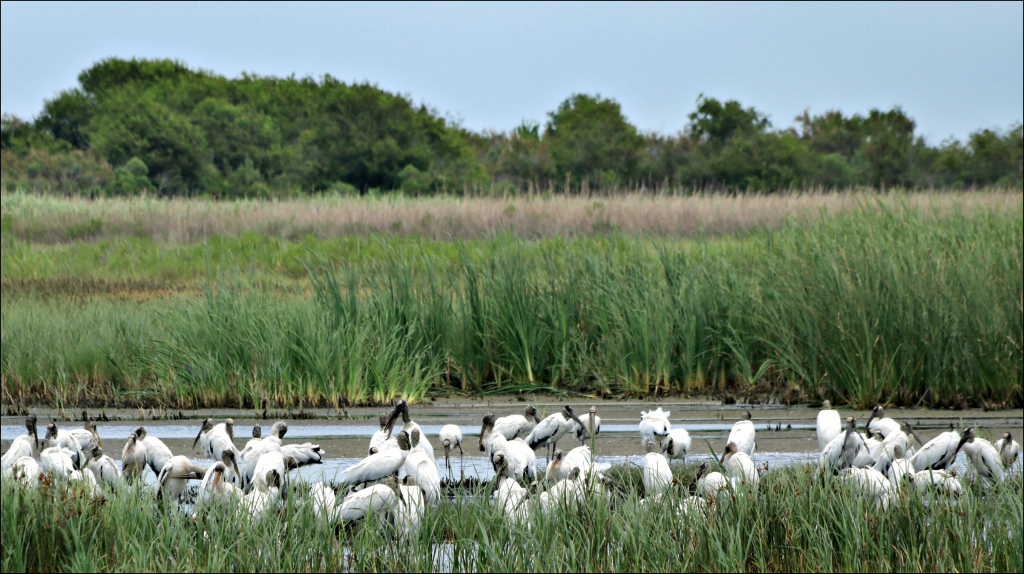
Even within their territory Wood Storks are not as common as Herons, Egrets and the like. Loss of habitat has decreased their populations. They’ve always shown up as a surprise to me. Maybe at the end of my driveway, maybe along the road that has standing water, or maybe soaring high overhead. No matter. Just keep your best birding binoculars, field scope, and travel gear for your next trip to Florida. It would be unfortunate to miss out on experiencing America’s only Stork, the Wood Stork. I’ll see ya out there!

